Recent Water Damage Posts
Ceiling Water Damage in Lacey: Quick Tips and What to Do
12/4/2024 (Permalink)
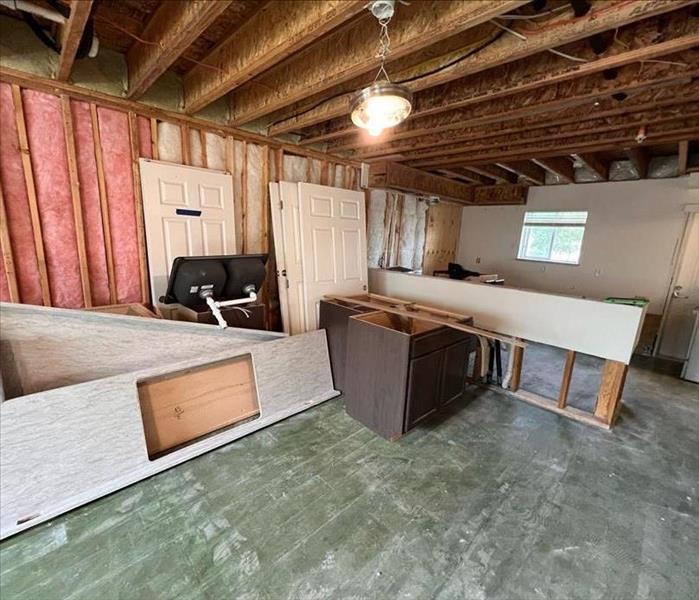 SERVPRO of Lacey Mitigating Water Damage After Ceiling Water Leak
SERVPRO of Lacey Mitigating Water Damage After Ceiling Water Leak
Ceiling leaks can lead to significant damage in your home or business. Whether caused by plumbing issues, roof damage, or severe weather, acting quickly can help mitigate the impact.
What to Do If You Discover a Ceiling Leak
- Ensure Safety: If you notice water dripping, check for electrical hazards. Avoid the area and turn off the power if necessary.
- Identify the Source: Locate the leak if possible. If you can’t determine the cause, reach out to a professional.
- Contact SERVPRO of Lacey: Our trained team is available 24/7 to assess the damage, remove water, dry the area, and restore your property Like it never even happened.
Prevention Tips
- Inspect Your Roof: Regularly check for damaged shingles and clear gutters to prevent leaks.
- Maintain Plumbing: Regularly inspect pipes for leaks and address issues promptly.
- Improve Insulation and Ventilation: Proper insulation in attics can prevent condensation and potential leaks.
Why Choose Us?
At SERVPRO of Lacey, we understand that every water damage situation is unique. Our professional team is equipped to handle everything from water extraction to complete restoration, ensuring your property returns to its preloss condition efficiently. Don’t let a ceiling leak turn into a disaster—contact us anytime for fast, reliable service!
Comprehensive Restoration Services by SERVPRO of Lacey
11/5/2024 (Permalink)
 Water Damage Restoration Team SERVPRO of Lacey Team Friermuth
Water Damage Restoration Team SERVPRO of Lacey Team Friermuth
When water damage strikes, having a professional team that can handle everything from cleanup to reconstruction is crucial. At SERVPRO of Lacey, we offer comprehensive water restoration services to get your property back to its pre-damage condition—Like it never even happened.
Our Complete Restoration Process
From start to finish, we handle every step of the restoration process:
- Assessment and Water Removal: We quickly assess the damage and remove all standing water with advanced equipment.
- Drying and Dehumidification: Industrial-grade drying equipment ensures no hidden moisture remains, preventing mold growth.
- Cleaning and Sanitizing: We clean and sanitize affected areas to eliminate contaminants and odors.
- Full Reconstruction: Our team also provides full reconstruction services, including drywall repair, flooring replacement, and painting, to restore your space completely.
Why Choose SERVPRO of Lacey?
- Trained Technicians: Our professionals are certified in water damage restoration and equipped with the knowledge to handle any project.
- Advanced Equipment: We use the latest tools to ensure effective restoration.
- End-to-End Service: We manage every aspect of the restoration process, from water removal to rebuilding.
For fast, reliable water damage restoration in Lacey, contact SERVPRO of Lacey. We’re here 24/7 to restore your property and make it?Like it never even happened.
The Importance of Addressing Dishwasher Leaks Quickly in Lacey, WA
11/5/2024 (Permalink)
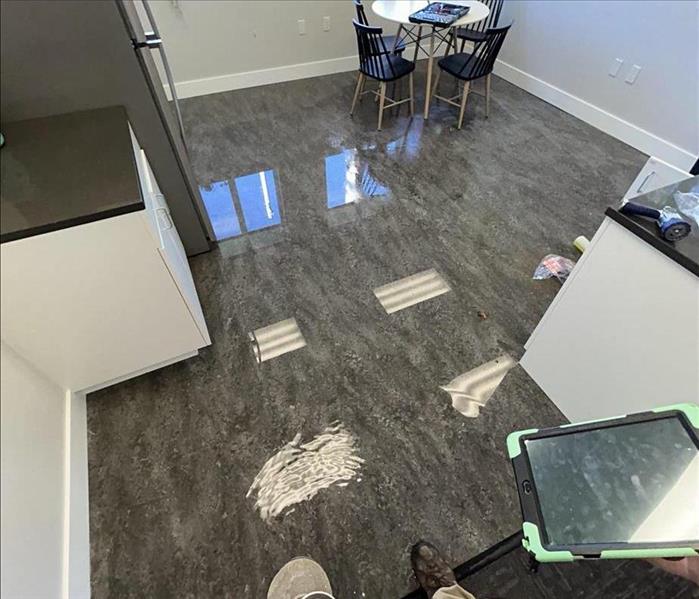 Water Damage From Leaking Dishwasher SERVPRO of Lacey WA
Water Damage From Leaking Dishwasher SERVPRO of Lacey WA
Dishwasher leaks are a frequent source of unexpected water damage in both homes and businesses. While dishwashers offer convenience, they can also cause hidden damage if they begin to leak, which may go unnoticed until it’s too late. Understanding the causes and effects of dishwasher leaks and knowing the importance of quick, professional water mitigation can save you from costly repairs.
Common Causes of Dishwasher Leaks
Dishwasher leaks can happen for several reasons, including:
- Faulty Door Seals: The rubber seals around the dishwasher door can wear out over time, allowing water to escape during a wash cycle.
- Clogged Drain or Filter: A blocked drain or dirty filter can cause water to back up and overflow inside the dishwasher.
- Improper Installation: Dishwashers must be installed correctly to avoid leaks in the supply and drain lines, and any misalignment can lead to leaks.
- Overloaded Dishwasher: When overloaded, dishwashers may leak due to water being forced against the door seal.
Effects of Untreated Dishwasher Water Damage
A leaking dishwasher may seem like a minor problem, but ignoring it can lead to severe consequences:
- Mold Growth: Moisture from a slow leak can lead to mold growth, especially in hidden areas under the dishwasher or within cabinetry. Mold spreads quickly, and exposure can pose health risks.
- Damage to Flooring and Cabinetry: Water can seep into your flooring and cabinetry, leading to warping, discoloration, and deterioration. Hardwood floors, tile, and cabinetry can all suffer significant damage if not promptly dried.
- Structural Damage: Prolonged leaks may even damage the structure of your home, weakening subfloors and potentially leading to costly repairs.
Why Choose SERVPRO of Lacey for Water Damage Restoration
When it comes to dishwasher leaks and any other type of water damage, SERVPRO of Lacey is your local expert in fast, professional water mitigation:
- Immediate Response: We understand that time is critical when dealing with water damage. That’s why we respond quickly to limit the impact and begin restoration as soon as possible.
- Advanced Drying Equipment and Techniques: Using industry-leading drying and dehumidification equipment, we ensure that all affected areas are thoroughly dried to prevent further damage and mold growth.
- Skilled Technicians: Our certified professionals are trained in water damage restoration and are equipped to handle any situation, from minor leaks to more extensive water issues.
If you’re experiencing a dishwasher leak or any other water damage, contact SERVPRO of Lacey. We’re here to help protect your home from further damage and restore Like it never even happened.
The Silent Threat: How Water Leaks Impact Businesses and What You Can Do About It
3/5/2024 (Permalink)
Water leaks are often overlooked, yet they pose a significant risk to businesses of all sizes. In fact, water leaks are the most common form of loss reported by businesses, and their consequences can be far-reaching. Let's explore the effects of water leaks on businesses and how SERVPRO of Lacey can help mitigate the damage and minimize downtime.
Water leaks can cause extensive damage to property, including structural damage to buildings, flooring, walls, and equipment. The presence of water can lead to mold growth, compromising indoor air quality and posing health risks to employees and customers alike.
The cost of water damage can be substantial, encompassing repair and restoration expenses, as well as potential fines for non-compliance with building codes and regulations. Additionally, insurance premiums may increase following a water damage claim, further adding to the financial burden on businesses.
Perhaps the most significant impact of water leaks on businesses is the disruption to operations and business downtime. Water damage can force businesses to close temporarily, resulting in lost productivity, missed deadlines, and dissatisfied customers. The longer the downtime, the greater the potential loss in revenue and reputation damage.
At SERVPRO of Lacey, we understand the urgency of addressing water leaks promptly and effectively. Our team of highly trained professionals is equipped with advanced technology and expertise to handle water damage restoration quickly and efficiently. We offer 24/7 emergency response services to mitigate further damage and minimize business interruption.
In addition to water damage restoration, SERVPRO of Lacey provides comprehensive mold remediation services to address any mold growth resulting from water leaks. Our goal is not only to restore your property to its preloss condition but also to ensure a safe and healthy environment for your employees and customers.
With SERVPRO of Lacey by your side, you can rest assured that your business is in good hands. Don't let water leaks jeopardize your business's success—contact us today for fast, reliable, and professional water damage restoration services.
Remember, when it comes to water damage, swift action is crucial. Trust SERVPRO of Lacey to handle the aftermath of water leaks and minimize downtime for your business.
The Crucial Role of Maintenance in Preventing Winter Water Damage
12/1/2023 (Permalink)
As the cold, rainy months approach, it's essential to take proactive measures to safeguard your home and business from potential water damage. Neglecting maintenance during this season can lead to a host of issues, including leaks, flooding, and mold growth. In this blog post, we'll explore the importance of regular upkeep and offer tips on preventing water damage.
- Gutters & Downspout Maintenance –
Clogged gutters and downspouts can lead to water overflow, causing damage to your roof, siding, and foundation. Regularly clean gutters to ensure proper drainage and consider installing gutter guards to prevent debris buildup.
- Roof Inspection –
A well-maintained roof is your first line of defense against water intrusion. Check for missing or damaged shingles, and promptly address any issues to prevent leaks. Consider hiring a professional for a comprehensive roof inspection before the rainy season.
- Seal Windows & Doors –
Inspect the seals around windows and doors for gaps or cracks that could allow water infiltration. Use weather-stripping or caulk to seal any openings and keep the cold and wet weather outside.
- Check for Leaks Indoors –
Inspect your plumbing, including faucets, pipes, and appliances, for any signs of leaks. A small drip can quickly escalate into a major problem, leading to water damage and potential mold growth. Address leaks promptly to avoid costly repairs.
- Maintain Landscaping –
Ensure that the grading around your home or business directs water away from the foundation. Poor drainage can lead to basement flooding and structural damage. Consider installing a French drain or extending downspouts to divert water away from the building.
- Inspect the Foundation –
Regularly inspect your home or business foundation for cracks or signs of water seepage. Seal any cracks with an appropriate sealant to prevent water from entering and causing structural damage.
- Sump Pump Maintenance –
If your property has a sump pump, make sure it is in good working condition. Test the pump regularly, and consider installing a battery backup system to ensure functionality during power outages.
- Winterizing Outdoor Plumping –
Prevent frozen pipes by disconnecting and draining outdoor hoses. If applicable, shut off exterior water valves, and insulate pipes in unheated areas, such as basements and crawl spaces.
Taking the time to perform routine maintenance can save you from the headaches and expenses associated with water damage during the cold, rainy months. If, despite your best efforts, you find yourself dealing with water damage, remember that SERVPRO of Lacey is available 24/7/365 for emergency water remediation services. Call us at (253) 735-2919, and let our team of experts help restore your home or business to its pre-damage condition. Stay dry and protected this winter!
A Comprehensive Guide to Hurricane Preparedness and Recovery
11/1/2023 (Permalink)
As the calendar flips to November, we find ourselves in the last month of hurricane season. it's crucial to remember that while the peak of hurricane activity may have passed, the potential for storms and their aftermath still lingers. This blog post will provide you with valuable information on how to stay safe during this time and what to do if you experience a hurricane or flooding.
Pre-Storm:
One of the most critical aspects of hurricane preparedness is staying informed. Keep an eye on weather forecasts, and if a hurricane or severe storm is expected, monitor updates from reliable sources such as the National Hurricane Center, your local government, and news outlets. Make sure to have a battery-powered weather radio on hand in case of power outages.
Create an Emergency Kit
Having an emergency kit ready can make a world of difference during a hurricane. Include essential items like non-perishable food, water, flashlights, batteries, a first-aid kit, personal hygiene products, and important documents. Don't forget to stock up on any necessary prescription medications and pet supplies if you have pets.
Prepare Your Home
Securing your home is vital to your safety during a hurricane. Reinforce windows and doors, trim tree branches that could become projectiles, and clear your gutters. If you live in a flood-prone area, consider investing in sandbags and flood barriers to protect your property.
Evacuation Plan
If you live in an evacuation zone, be prepared to leave when authorities issue evacuation orders. Have a plan in place for where you will go, and make arrangements for your pets if you have them. It's essential to leave early to avoid traffic congestion and ensure your safety.
Communication
Keep lines of communication open with your family and friends. Make sure everyone knows your whereabouts and how to reach you. Establish a central point of contact in case family members get separated during the evacuation.
Stay Safe During the Storm
During the hurricane, stay indoors and away from windows. If flooding occurs, move to higher ground, and never attempt to drive or walk through floodwaters. The power may go out, so use flashlights instead of candles to prevent fires. Charge your phones and have a portable charger ready to stay connected.
Post-Hurricane Actions:
After the hurricane passes, it's not time to let your guard down. Be cautious of downed power lines, flooding, and debris. Check on your loved ones, especially the elderly and those with special needs. If you evacuated, wait for authorities to declare it safe to return home.
Stay Informed
After the hurricane has passed, continue to stay informed about local conditions and updates. Keep your weather radio or other communication devices handy to receive updates on road closures, emergency services, and relief efforts. This information is invaluable as you assess the situation and plan your next steps.
Contact Loved Ones
Let your friends and family know that you're safe and sound. Keep your cell phone charged and use it to communicate with your loved ones. A simple text message can ease their worries and keep the lines of communication open.
Document the Damage
Take photographs and videos of the damage to your property, both inside and outside. This documentation can be vital when dealing with insurance claims and seeking assistance. Make sure to document any damage to vehicles as well.
Contact Your Insurance Company
Contact your insurance company as soon as possible to report the damage and start the claims process. Be prepared to provide them with the documentation you collected. If you're unsure about your policy's coverage, ask your insurance agent for clarification.
Assess Your Home's Safety
If you're allowed back into your home, assess its safety and the extent of the damage. Secure any openings to prevent further damage, such as covering broken windows and tarping damaged roofs. Take steps to remove water and begin drying out your home to prevent mold growth by calling SERVPRO of Lacey at (253) 735-2919.
Seek Assistance
If you're in need of immediate assistance, contact local emergency services or relief organizations. They can provide you with information on shelters, food distribution, and medical services. Local government agencies may also provide resources for disaster recovery.
Reach Out to FEMA
In the aftermath of a major disaster, the Federal Emergency Management Agency (FEMA) may offer assistance to affected individuals and communities. Contact FEMA to inquire about the available aid and how to apply for it if you or your family need it.
Begin Cleanup and Repairs
Once your safety is ensured, and you've taken the necessary steps to document and assess the damage, you can call SERVPRO of Lacey to begin cleaning up and essential repairs. Keep all receipts and records of expenses related to recovery efforts, as these may be important for insurance and assistance claims.
Experiencing a hurricane or flooding can be a challenging and emotional ordeal. However, by following these steps after the storm and calling SERVPRO of Lacey, you can begin the process of recovery and rebuilding. Remember to stay safe, document the damage, and seek assistance when needed. With the support of your community, the appropriate agencies, and SERVPRO, you can recover from the aftermath of a hurricane and look forward to better days ahead.
Ceiling Water damage around a light fixture.
3/8/2023 (Permalink)
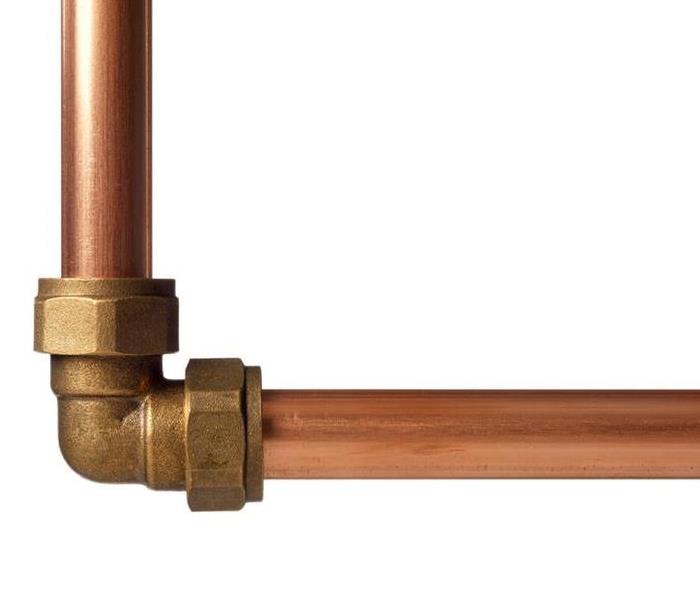 When water damage from a pipe break occurs, light fixtures could cause damage or potential for fire.
When water damage from a pipe break occurs, light fixtures could cause damage or potential for fire.
Water damage is one of the most common reasons for calling in a professional restoration company. Water dripping from your light fixtures is an especially serious problem that can lead to mold growth, mildew and other issues. The first thing to do if you suspect you have water dripping from your light fixtures is to determine what's causing it. As soon as possible, call SERVPRO of Lacey.
What to do?
If you see water dripping from your light fixtures, it's important to act quickly. Water damage can be serious and even cause mold growth if not taken care of immediately. That's why we recommend hiring a professional like SERVPRO to help you with your problem.
SERVPRO of Lacey is the best company for the job because they have experienced technicians who know how to handle these situations without damaging anything else in your home or business space. They'll also make sure that all traces of moisture are removed before leaving so that there isn't any chance for mold.
What you need to know about the plumbing in your home
Plumbing is a lot more complicated than it looks. In addition to the pipes that carry water through your home, there are also vents and drains that need to be kept clear of debris so they can function correctly. The location of these components varies depending on whether you have a slab or foundation-style house; if you don't know what kind of structure you live in, check with an expert before starting any work yourself.
If there's one thing every homeowner should know about plumbing. It can cause serious damage if not handled properly by professionals who know what they're doing. That's why we recommend hiring someone if your problem isn't too severe. For example, if only one fixture is leaking or dripping water onto the floor below (as opposed to multiple fixtures). If this doesn't seem like something worth tackling yourself (or if it seems like too big an undertaking), contact us today.
How to prevent problems with your light fixtures
- Ensure that the electrical connections are tight.
- Replace any worn or damaged light fixtures.
- Check for leaks in your light fixtures by turning off the power at the circuit breaker and looking for water stains on the ceiling or walls near where your lights are installed. If you find a leak, turn off the power and contact a professional for assistance before attempting to repair it yourself
Water damage can be a serious problem
Water damage is a serious problem, and it's important to get professionals on the scene right away. SERVPRO is a full-service restoration company with trained professionals who can help with any water damage problem.
We have the equipment and expertise to handle any size disaster. We also work with insurance companies to make sure that you don't have to stress about making up for lost time or money while your home or business recovers.
If you have water dripping from your light fixtures, it's important to act quickly. If left untreated, water damage can cause serious problems in your home or office. SERVPRO of Lacey has the expertise and equipment needed to get the job done right--and we'll work with your insurance company so that you don't have to!
Can Your Water-Damaged Hardwood Floor be Saved?
12/1/2022 (Permalink)
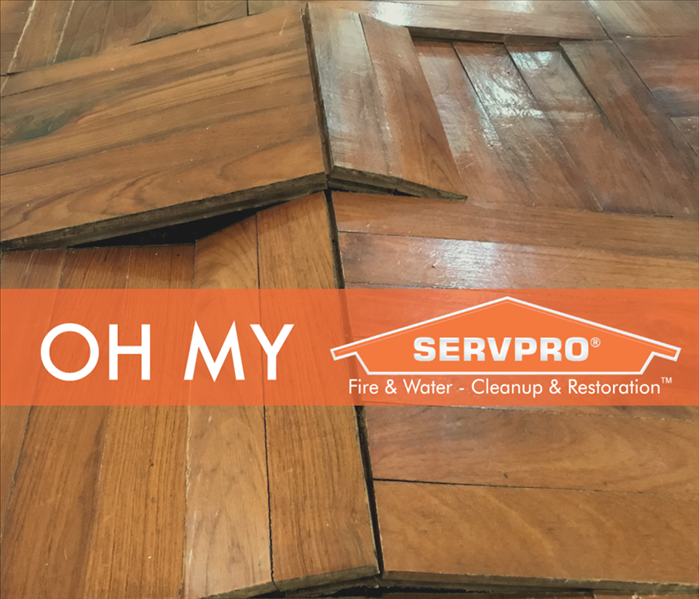 If your flooring is damaged by water damage call SERVPRO of Lacey.
If your flooring is damaged by water damage call SERVPRO of Lacey.
Can Your Water-Damaged Hardwood Floor be Saved?
Water is one of the most common causes of damage to hardwood floors. However, it’s not always easy to tell if a water-damaged hardwood floor can be saved. The good news is that there are plenty of factors that will help you determine if your floor can be saved or not. In this blog post, we'll discuss where the water damage came from and what kind of floors might have been damaged by it so you can figure out your next steps for getting your home back in shape after a flood or leak!
Can You Save Your Laminate Flooring?
If your laminate flooring has been damaged by water, don't worry! It's not too late to repair it.
If you have a small amount of damage, simply wipe up any standing water and then use a mop to dry the area. If there is more extensive damage, you may need to remove the damaged pieces and replace them with new ones.
When replacing a piece of laminate flooring, make sure that you use a similar-sized piece from a similar brand and color. To match up the old pieces with their replacements, use an awl or other thin metal tool as a guide for your new pieces.
What About Your Engineered Wood Floors?
If your engineered wood floors are made from MDF or medium-density fiberboard, then they should be saved. These floors are extremely durable and can be sanded many times over. This is one of the reasons why they're so popular among homeowners who want to do-it-yourself flooring projects.
However, unlike hardwood floors that can be refinished with polyurethane and continue to look good for years afterwards, engineered wood flooring cannot take repeated coats of polyurethane. Instead, you'll need to apply a stain or finish that will penetrate into the fibers of the board itself and resist wearing away through friction.
How to Refinish Your Solid Hardwood Floor
If your hardwood floor is damaged beyond repair, you’ll need to remove the damaged wood and then refinish the entire floor.
To prepare for a refinishing project, you will have to remove all furniture and other items from the room. After removing all debris from the room, sweep up any remaining dust with an old broom handle or push broom attachment on your vacuum cleaner before beginning work on removing old finish from your solid hardwood flooring
Call A Professional
It’s often impossible to tell how much damage has been done until the water has been removed and the floor has dried. A professional will be able to assess your situation, determine what course of action is required, and recommend the best way for you to move forward.
In addition, a professional will know how best to remove all of the water from your flooring before it can cause any further damage. For example, if you try to use a vacuum or steam mop on your own—which are generally not recommended methods—you could risk scratching or damaging your hardwood floors instead of drying them properly. A professional will also be trained on how long they should wait between removing excess moisture from their floors and refinishing them so that they don’t warp because too much time has gone by between these steps.
Don’t be scared off by the thought of water damage to your flooring. With a little education and some expert help, you can save your floors and get them looking like new again.
How Do I Flush A Water Heater?
11/3/2022 (Permalink)
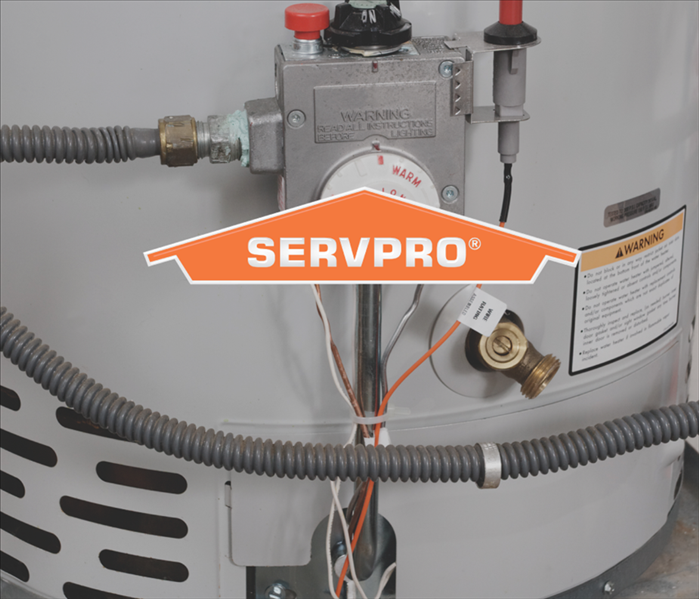 Flushing a water heater is a process that takes time and patience.
Flushing a water heater is a process that takes time and patience.
How Do I Flush A Water Heater?
If you're like most people, the first time you ever flushed a water heater, it was because something went wrong. Maybe you left the faucet running and flooded your bathroom. Maybe you forgot to turn off a pipe after doing some plumbing work. Or maybe you got too excited about a new home improvement project only to find out that your water heater is actually smaller than expected. Regardless of the reason, here's what to do if you need to flush your water heater:
Before you being, turn the power off to the water heater.
To turn off the power, you need to turn off the breaker that supplies power to your water heater. You may have noticed this when you first turned on your circuit breakers after installing new electrical outlets or switches—there were two separate boxes next to each other, one labeled "power" and the other labeled with a number (e.g., 120V). This is because there are actually two different kinds of electricity: alternating current (AC) and direct current (DC). AC flows back and forth between positive and negative while DC flows in one direction only.
This is an important step. Turning off the power ensures your safety and protects the machinery.
Step 1: Turn off the water heater and water supply
The first thing to do is turn off the water heater and water supply.
To turn off a gas-powered water heater, you must first turn off its pilot light by pressing down on the knob until it clicks. Then, open up the gas valve cover and turn off any valves that are marked "gas" or "pilot." Finally, look for a lever that says "on/off," which should be located near where you turned off your pilot light. Push this lever towards you (so it is perpendicular to your main burner) in order to shut down your heating source entirely.
Next, you need to find out where your hot and cold water lines connect to your house's plumbing system so that they can be shut off confidently without causing damage or leaks anywhere else in your home's water system. This can vary depending on what kind of equipment was installed when they built out this part of their house - so don't worry if some connections are harder than others! Just keep trying different ones until something works!
Step 2: Connect a garden hose to the drain valve.
You will need to have a garden hose long enough to reach all the way inside the drain valve. Attach the other end of your hose to your drain, and then turn on your water heater.
Step 3: Run hot water and open the drain valve.
Now, open the drain valve to let water out of the tank. The hot water will start flowing into your sink or tub and you'll be able to see if there are any problems with your heater as it empties. Be careful not to get burned by hot water!
Run hot water until the water coming out of the drain valve is clear and free of sediment. When you've flushed your tank well enough, turn off the tap at its end and close it back up again.
Step 4: Turn the water supply back on to flush the tank.
- Turn the water supply back on.
- Run water through the tank until you see it start to flow out of your faucet.
- Close the drain valve (on older models, this is usually a large brass lever or knob) and fill up your tank with fresh water.
Step 5: Fill the tank and turn on the water heater.
Before you can turn the water heater on, you need to make sure that the tank is full of water. This will take some time, so be patient. When the tank is full, you can turn on the water heater.
Hopefully, we’ve given you a few ideas on how to flush your water heater. Remember that it is a process that takes time and patience, so don’t get frustrated if things don’t go according to plan at first! With enough practice and perseverance though, anyone can do this job themselves—and save money in the process.
3 Tips for Handling an Overflowing Toilet
8/25/2022 (Permalink)
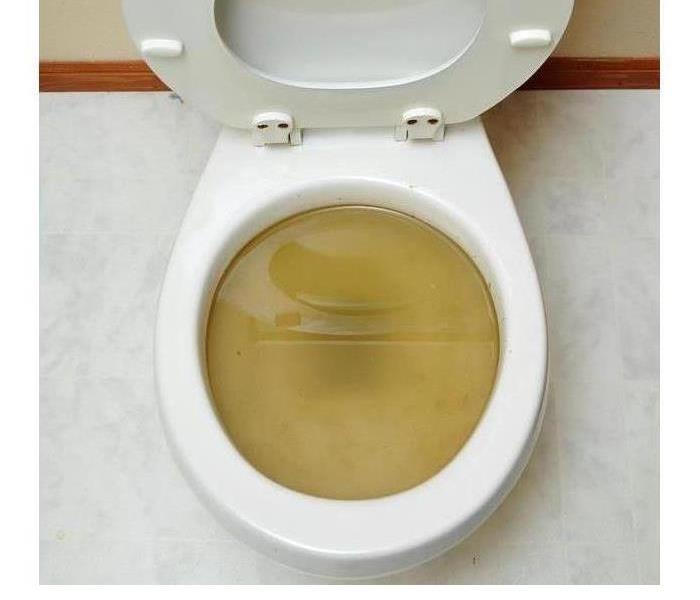 If your toilet overflows is being caused by sewer damage.
If your toilet overflows is being caused by sewer damage.
What Do I Do If My Toilet Overflows?
Few things might cause more stress for you as a Tenino, WA, homeowner than an overflowing toilet. There are several reasons a toilet might flood, from a pipe clog to local sewer damage. No matter the cause, the resulting overflow can mean quite a mess. However, there are several actions you can take to reduce the risk of damage to your home until you can call a flood cleanup and restoration service to handle the worst of the problem.
1. Shut Off the Water Valve
If you can reach the toilet safely, locate the shutoff valve. It is usually on the back of the exterior tank, near the bottom. Turn the valve until the water flow stops. You can also take the top off the toilet tank and lift the float ball to stop the toilet from running.
2. Clear the Area
If the toilet overflow is being caused by sewer damage due to heavy rains or localized flooding, it is a good idea to clear the area and make it off limits until the cleanup crew arrives because the flood water likely contains contaminants that may harm people and pets. Do not let anyone touch the water with their bare hands and try to seal off the bathroom as best you can. Once you contain the flood as much as possible, call the sewage company to let them know what has happened.
3. Note What You See
It is best to leave the aftermath of a flooded toilet to your cleanup crew. However, it may help the flood techs if you can tell them how the flood occurred and what you noticed directly before and after the incident. Did the toilet overflow very suddenly or did it happen slowly? Did you notice any unusual sounds or odors emanating from the toilet before the flood? Letting your cleanup crew know about these details may help them handle the problem with more efficiency.
Sewer damage, clogged pipes, and other plumbing issues can all cause a toilet flood in your Tenino, WA, home. However, knowing how to stem the worst of the damage until help arrives can help you protect your home and family.
Are My Flooded Electronics Salvageable?
7/15/2022 (Permalink)
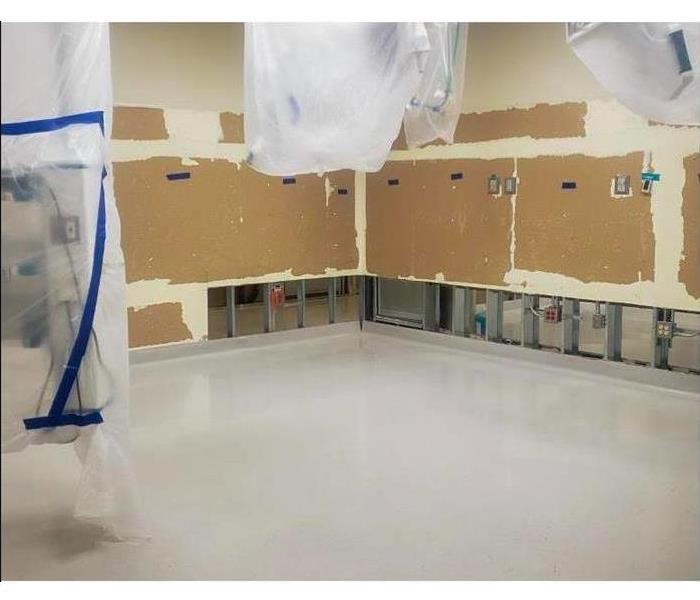 Call a water removal company after a flood.
Call a water removal company after a flood.
As a business owner in Olympia, WA, you may worry that flooded electronics caused by severe weather and faulty plumbing can make your valuable records inaccessible. Answers to the following questions determine if your equipment is salvageable after a flood.
Were Your Electronics Submerged?
When electronics spend any amount of time underwater, damage occurs quickly to parts, including:
- Circuit boards
- Lithium batteries
- Monitors
- Chips and memory cards
If devices, including computers, printers, and phones, are running while submerged, it is critical to shut off the main power supply before handling them to prevent electrocution. Submerged electronics are usually irreparable, making placement the only option.
Were Your Electronics Exposed To High Humidity?
Electronic damage can occur even when your equipment does not spend any time underwater. After a flood, contacting a flood restoration service to perform water extraction can prevent a dramatic rise in humidity. Moisture can cling to dust that collects within your electronic equipment to create a thick, muddy substance that reduces airflow, causing the device to overheat. Excessive heat causes computer motherboards and phone batteries to run slowly and inefficiently.
Electronics powered off while exposed to high humidity have the best chance for successful restoration; however, it is still worth attempting to clean and dry them if this is not the case. Experts who specialize in flooded electronics can do this if you do not feel comfortable handling devices yourself.
Was Water Dripping on Your Electronics?
Leaks are a common cause of flooded electronics in business offices. Leaks can expose devices to water with high concentrations of minerals, ions, or contaminants that can cause adverse effects by changing interior parts' conductivity. Attempts to dry your electronics do not guarantee their restoration, but doing so as soon as possible before corrosion sets will increase the chances of success.
If floods and leaks cause electronic damage at your business, a flood restoration company can coordinate your drying and repair efforts.
How To Restore Water Damage in 4 Steps
4/5/2022 (Permalink)
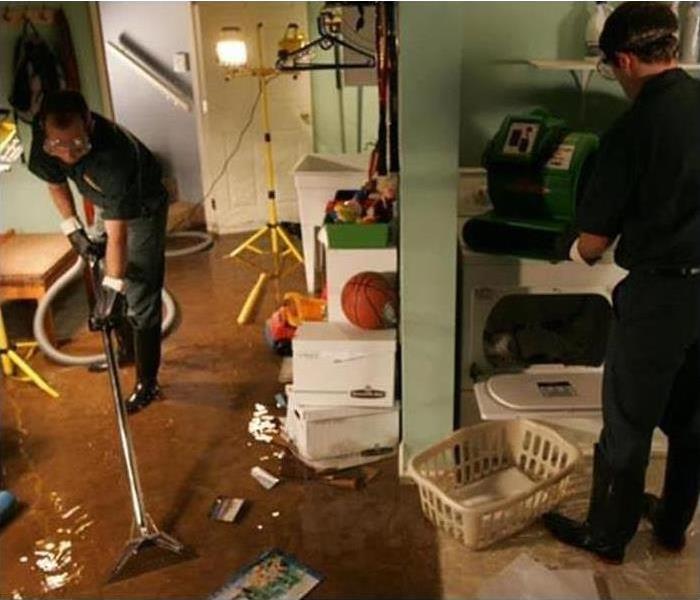 SERVPRO has the equipment and experience to extract water from your home or business, leaving your property dry.
SERVPRO has the equipment and experience to extract water from your home or business, leaving your property dry.
How To Repair Water Damage In 4 Easy Steps
Water damage to your Olympia, WA, home is a major hassle. Fortunately, swift action can prevent further problems. The following steps outline the water cleanup process.
1. Assess the Damage
The first thing you need to do after a flood is survey the damage. Identify and repair the source of the water. Fix broken pipes, patch leaks and take other necessary action to prevent further inundation. Determine whether the water source is clean or contaminated and if there are any electrical hazards. Some homeowners may feel comfortable completing the restoration process themselves, but others may choose to hire a certified restoration service.
2. Dry the Area
Keep in mind that water damage can lead to mold growth within 24 hours, so it is important to dry the area as quickly and thoroughly as possible. Use pumps, wet/dry vacuums, fans and dehumidifiers to dry out the water. If the humidity outside is low, open windows and doors to increase airflow.
3. Clean Affected Items
Depending on the source of the water and how long it has been stagnant, you may have to sanitize items that came into contact with it. Even clean water, such as from a water heater leak, can foster microbial growth and should be treated as contaminated after 24 hours.
4. Repair and Replace Damaged Items
After everything is clean and dry, you can begin the restoration process. Remember that some things, such as fiberglass insulation, affected by contaminated water cannot be completely cleaned and need to be replaced. Even if you can do some of the restoration yourself, professional assistance is often needed to restore delicate items like electronics, antiques and photographs.
Hopefully your home will never incur water damage. If it does, dry the property out, clean it thoroughly, and make any necessary repairs. Acting quickly helps prevent further damage and allows you to restore your home to its preloss condition.
Do You Need To Replace Your Bathroom Supply Lines?
1/13/2022 (Permalink)
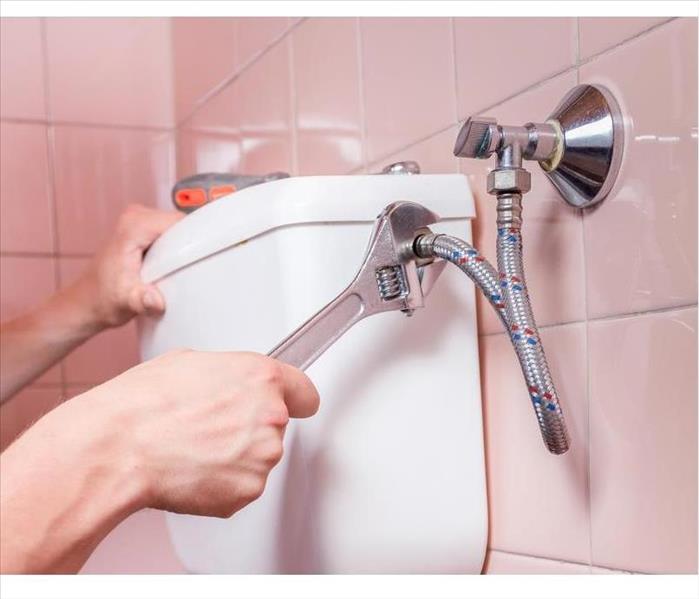 If you have water damage in your home, call SERVPRO. Our team has the right equipment for the job. Give us a call for your water damage, 24/7.
If you have water damage in your home, call SERVPRO. Our team has the right equipment for the job. Give us a call for your water damage, 24/7.
Do Your Bathroom Supply Lines Need to Be Replaced?
You use your bathroom every day. While you probably work hard to ensure your fixtures and flooring are clean, you may not give much thought to the supply lines that feed your bathroom with water. You should, however. Supply line damage can contribute to a bathroom flood that could destroy the comfort, value and appearance of your Olympia, WA, home.
Leaky Supply Lines Damage Bathrooms
If you have a supply line leak in your bathroom, you can expect significant damage to virtually all parts of the room. Specifically, you may need to repair or replace the following:
- Drywall
- Paint
- Subfloor
- Tile
- Carpeting
- Fixtures
Supply Lines Require Occasional Inspection
Like all parts of your home’s plumbing system, supply lines require occasional inspection. How frequently you need to take a look at your supply lines, though, depends on their makeup. If you have plastic lines, look for supply line damage every couple years. Metal supply lines tend to last longer, so you probably do not need to inspect them as often.
Restoration Technicians Limit Long-Term Damage
As you probably know, the long-term consequences of a bathroom leak can be significant. Even after you dry out flooded areas, mold and mildew can grow. To be certain you return your bathroom to it’s pre-flood condition, consider working with a reputable flood-restoration service. Technicians at these firms have the education, experience, skills and tools to analyze flood damage. They can also tell you whether you must scrap damaged items.
You probably don’t think much about the supply lines that feed your bathroom with water. Nonetheless, supply line damage can cause costly bathroom floods. By regularly inspecting your bathroom’s supply lines, you know when you need to replace them. Remember, if you can catch a flood before it happens, you increase your odds of keeping your bathroom in excellent shape.

 24/7 Emergency Service
24/7 Emergency Service









